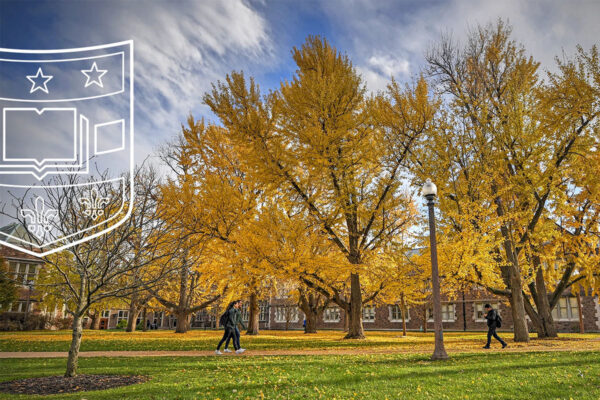While the day-to-day routines of the Washington University in St. Louis community have drastically shifted in the last month, technological advances have been a saving grace, affording communities the ability to maintain schedules and share special moments, even in a time of social distancing.
The new face-to-face meeting
At Washington University, one online tool in particular has kept things moving as efficiently as possible.
WashU IT launched the use of the videoconferencing tool Zoom in February. Faculty, staff and students have access to the service at no cost, with the ability to host meetings of up to 300 attendees. The timing couldn’t have worked out better, as it has proven to be essential to getting work done remotely during the coronavirus pandemic. With an Outlook calendar integration, Zoom has become a natural substitution for in-person meetings.
Between the months of February and March of this year, the university saw a more than 12-fold increase in active users: from 976 to 12,330. Departments are able to consistently check in with staff members with Zoom meetings. These meetings exploded from 3,247 meetings in February to 44,674 meetings in March. This level of face-to-face communication allows for some sense of normalcy in an ever-evolving world.
Zoom’s impact has extended into the classroom as well. While in-person classes have been put on hold, classes have continued online. Faculty have been able to either post Zoom recordings or host live Zoom meetings with students via Canvas, the university’s classroom management system. After spring break, Canvas usage more than doubled, leading to more usage of Zoom to facilitate classes.
The show must go on
In addition to meetings and classes, Zoom has allowed several campus departments to switch planned in-person events to virtual events. The university’s calendar solution, Happenings at WashU, is evidence of this major shift. Several events have been postponed or canceled, but with a little creativity and flexibility, other events were reworked so they could still take place, and help people stay connected, via Zoom.
The campus community has embraced the technology, and not just to handle lectures and routine department meetings. Special moments, such as when Chancellor Andrew D. Martin surprised Truman Scholarship recipients Zach Eisner and Max Klapow, are being captured through Zoom videos as well.
Zoom best practices
With the capability to connect through Zoom comes some responsibility. The university’s Information Technology department has done its part, putting precautions in place to deter “Zoombombing,” an interruption or disruption caused by unwanted participants during a Zoom meeting. Users are advised to follow best practices to safely use the service. Below are a few additional tips.
- Only share meeting links with intended attendees
- Reserve use of your Zoom Personal ID (PMI) for people you meet with often
- Refrain from posting meeting links on public websites or social media
There are other steps that can be taken such as activating the waiting room feature and locking meetings after they begin. Keep up to date with Zoom best practices as the university community continues to work together during this time.



